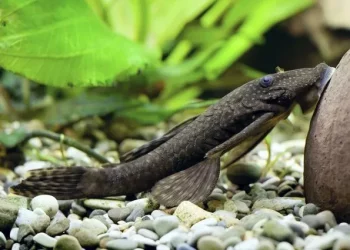The Australian Lungfish, also known as Neoceratodus forsteri, is a unique and ancient species of freshwater fish that is found only in the rivers and creeks of the Mary and Burnett River systems in Queensland, Australia. These fish are known for their ability to breathe air, and for their evolutionary importance as one of the few remaining living relatives of the early tetrapods, the first animals to evolve limbs and walk on land.
Due to their rarity and evolutionary significance, Australian Lungfish have been listed as a protected species under both state and federal legislation in Australia. However, despite these protections, the Australian Lungfish is still considered to be a vulnerable species, with their numbers declining due to various factors.
One of the biggest threats to the Australian Lungfish is habitat destruction. Human activities such as dam building, land clearing, and agricultural practices have led to the degradation and loss of their natural habitats, which in turn reduces the available breeding grounds and food sources for these fish.
In addition to habitat destruction, the introduction of non-native species such as Tilapia and Carp has also had a negative impact on the Australian Lungfish population. These non-native species compete with the Lungfish for resources, and can also prey on their eggs and young, further reducing their numbers.
Overfishing is also a major concern for the Australian Lungfish. These fish are highly prized by anglers for their rarity and size, and are often caught illegally or taken for the aquarium trade. The Australian Lungfish is a slow-growing species, with a lifespan of up to 100 years, and therefore, cannot sustain high levels of fishing pressure.
To address these threats, various conservation efforts are being implemented to protect and conserve the Australian Lungfish. The Australian Lungfish Monitoring Program, which was established in 2001, monitors the populations of Lungfish and their habitats, and provides important data for conservation management.
In addition, the Mary River Catchment Coordinating Committee has developed a Mary River Catchment Strategy, which aims to protect and restore the natural habitats of the Australian Lungfish, as well as other threatened and endangered species in the Mary River catchment.
Education and outreach programs are also crucial in raising awareness and promoting conservation efforts for the Australian Lungfish. These programs aim to educate the public about the importance of preserving the natural habitats of these fish, and to promote responsible fishing practices that minimize the impact on their populations.
In conclusion, the Australian Lungfish is a unique and endangered species that is facing multiple threats to its survival. Habitat destruction, the introduction of non-native species, and overfishing are all contributing to the decline in their populations. However, conservation efforts are underway to protect and conserve these fish, including monitoring programs, habitat restoration, and education and outreach programs. By taking action to protect the Australian Lungfish, we can ensure that this ancient and important species will continue to thrive for future generations.


























